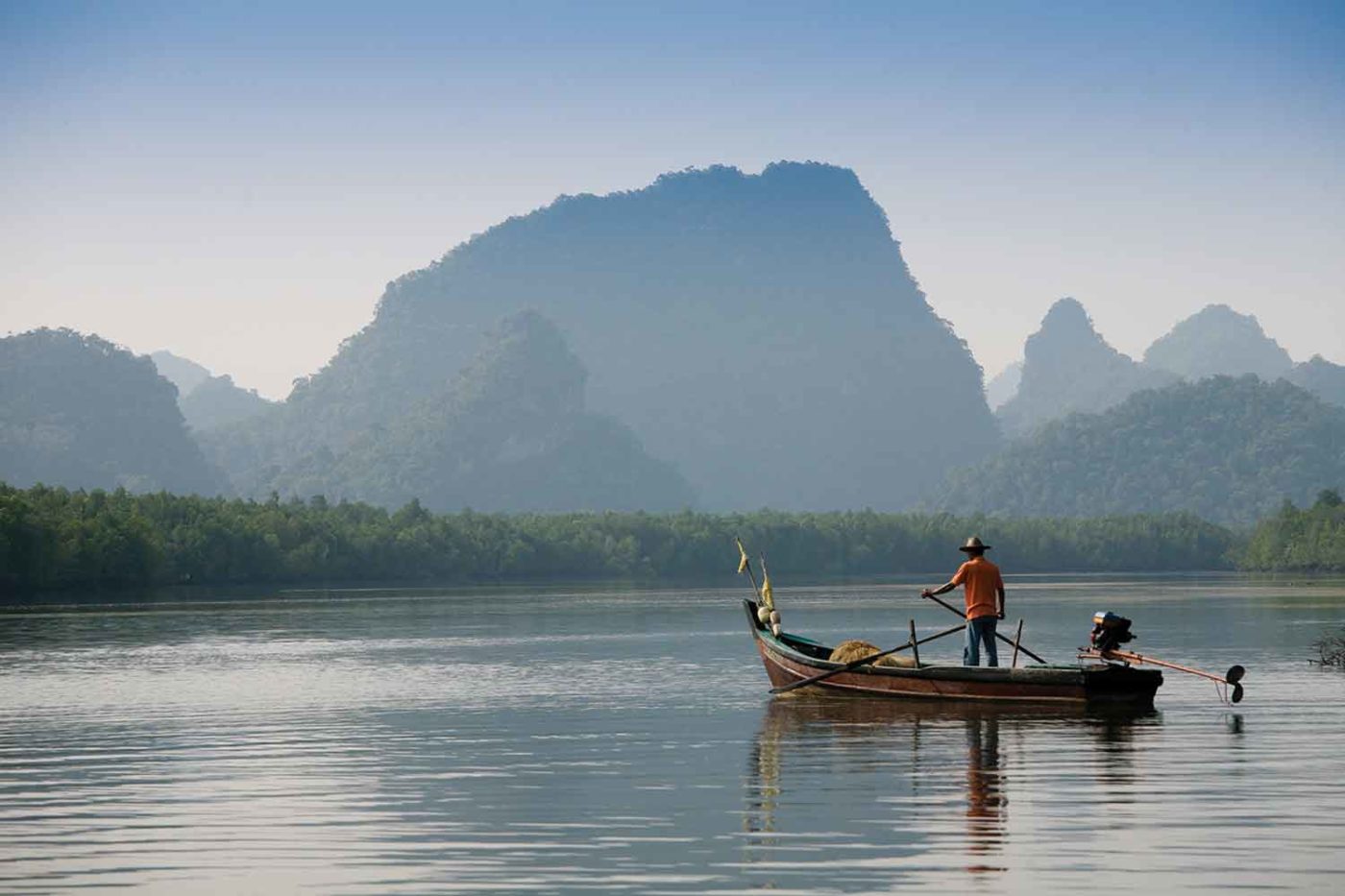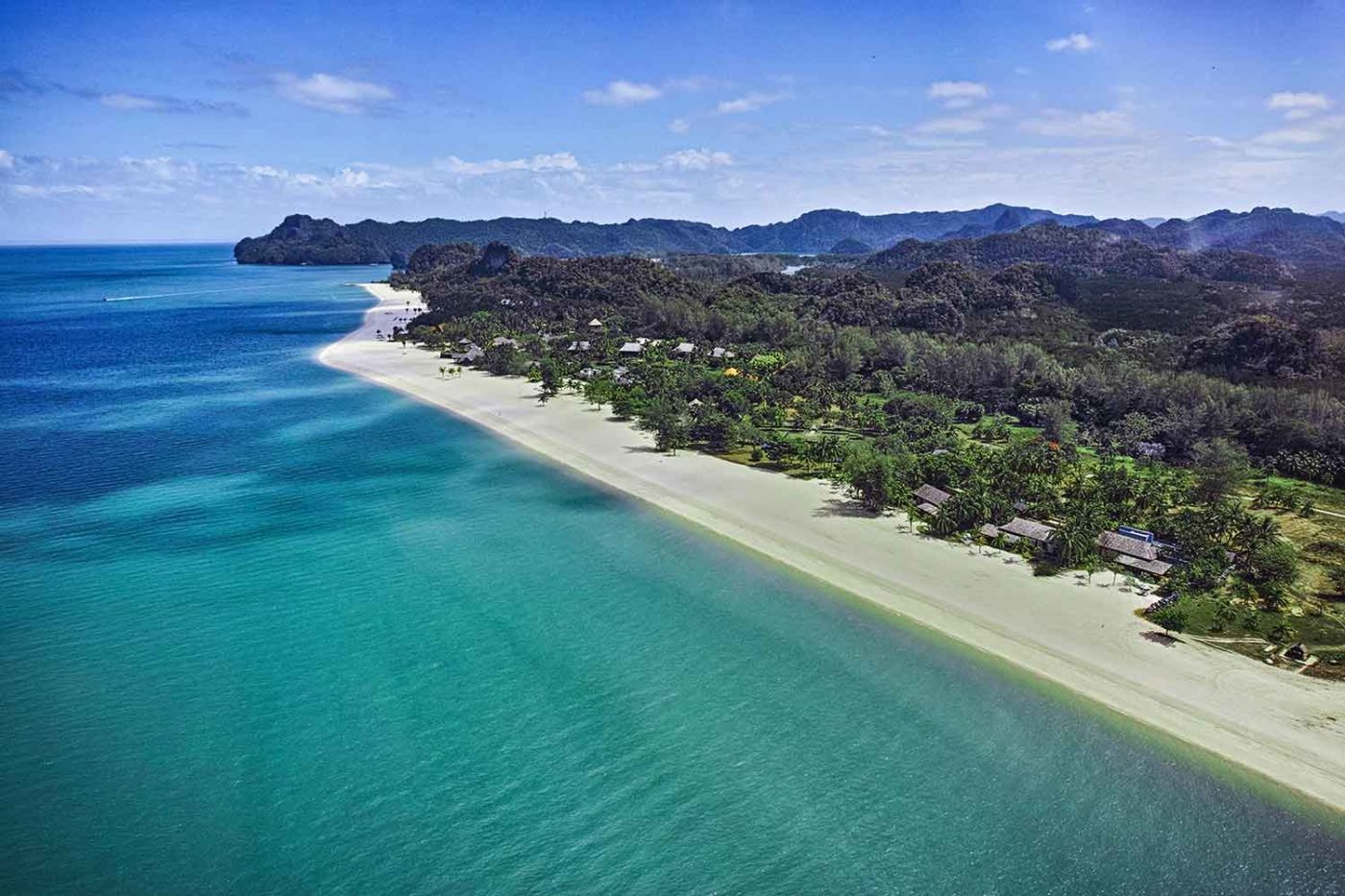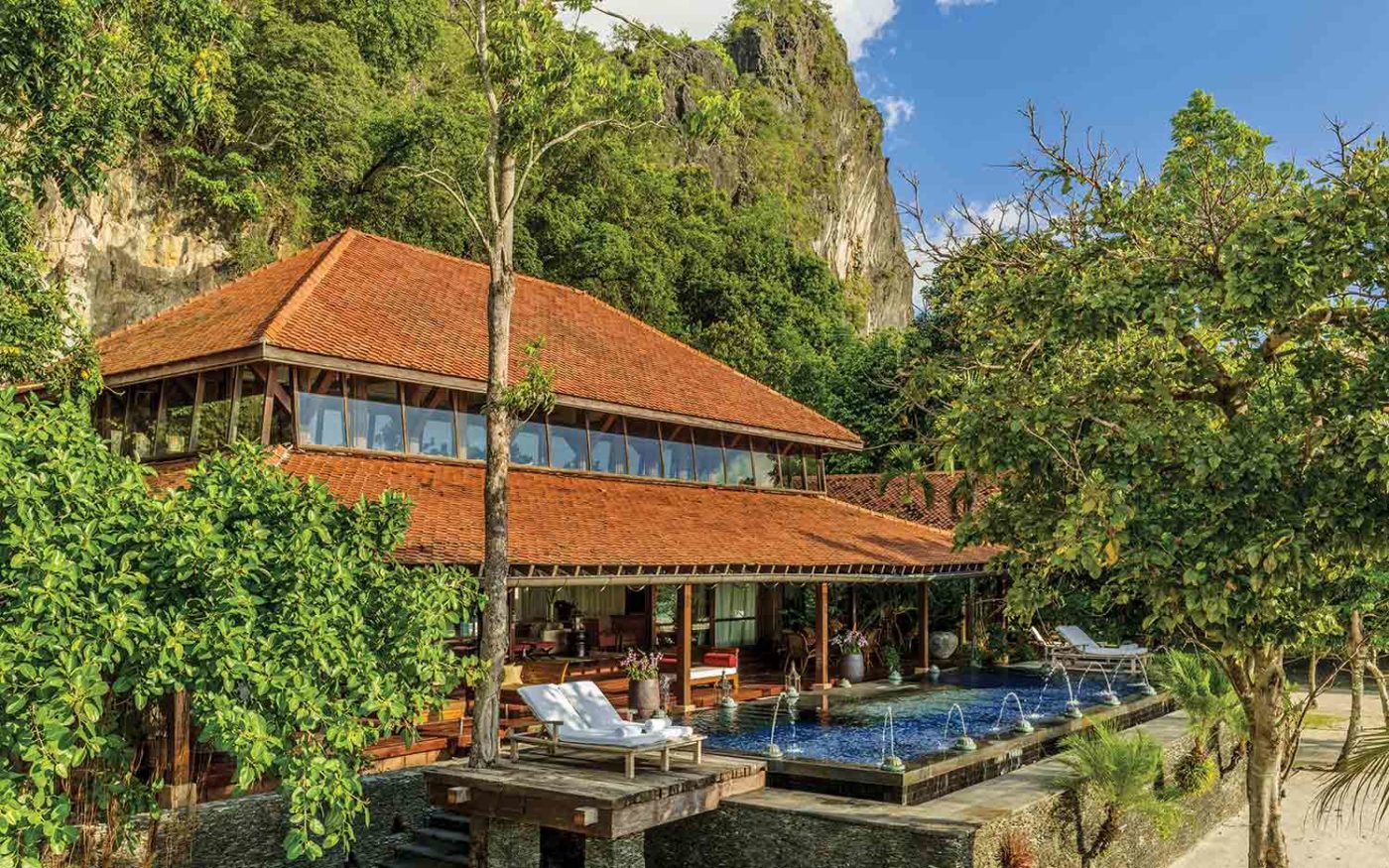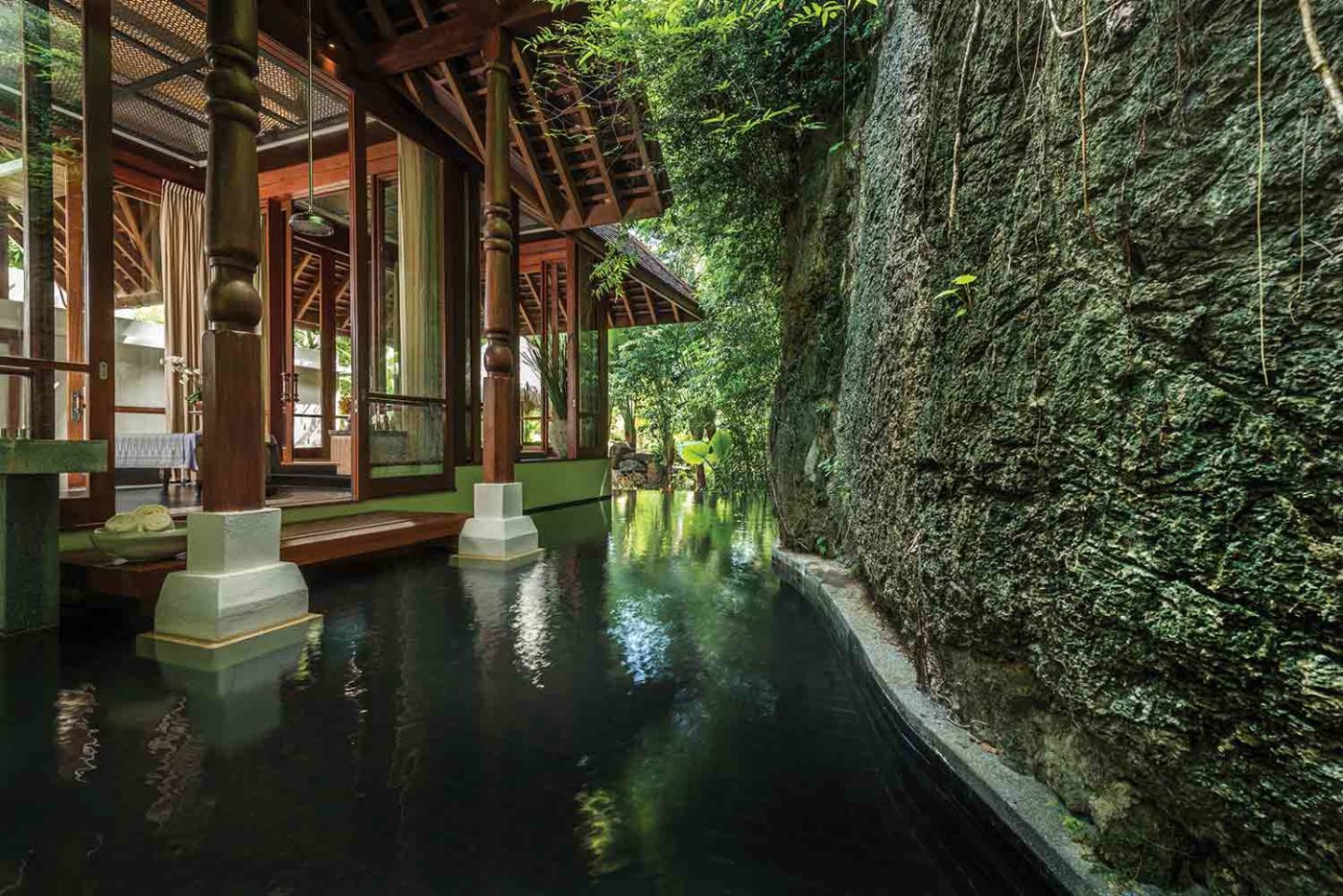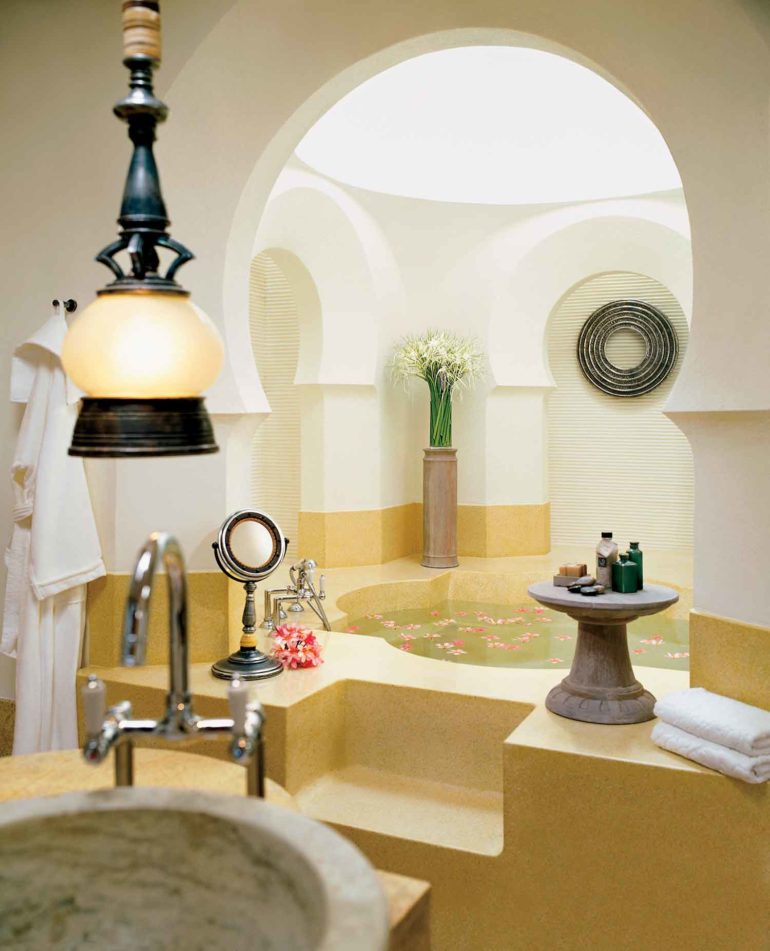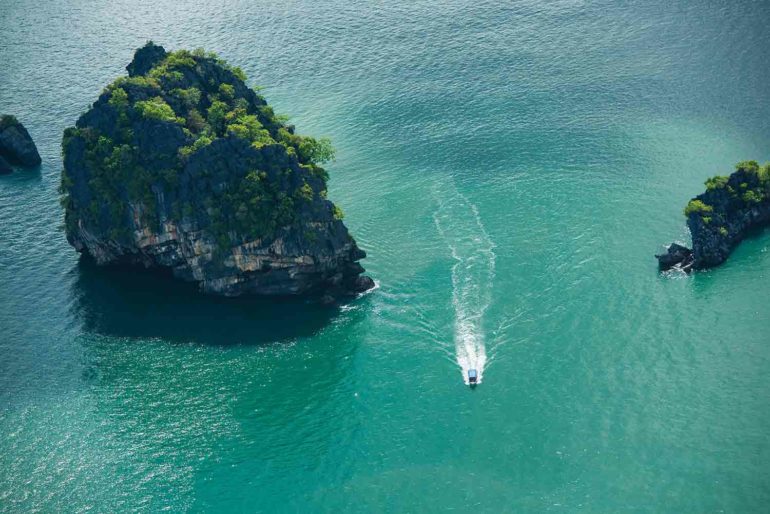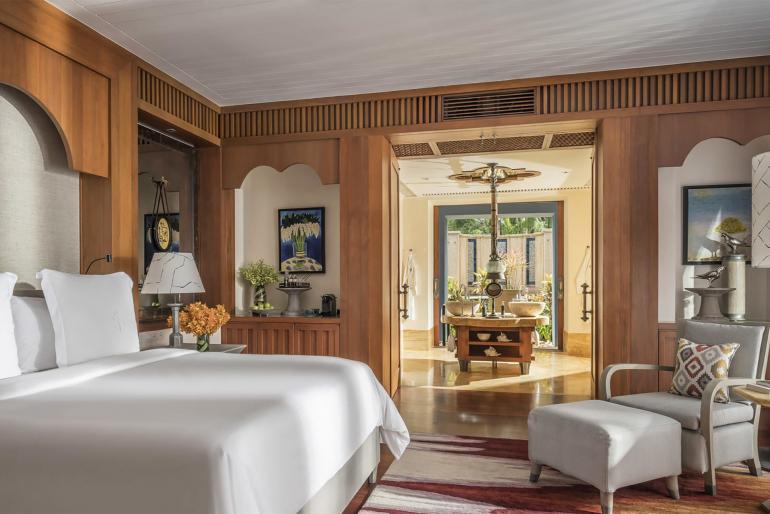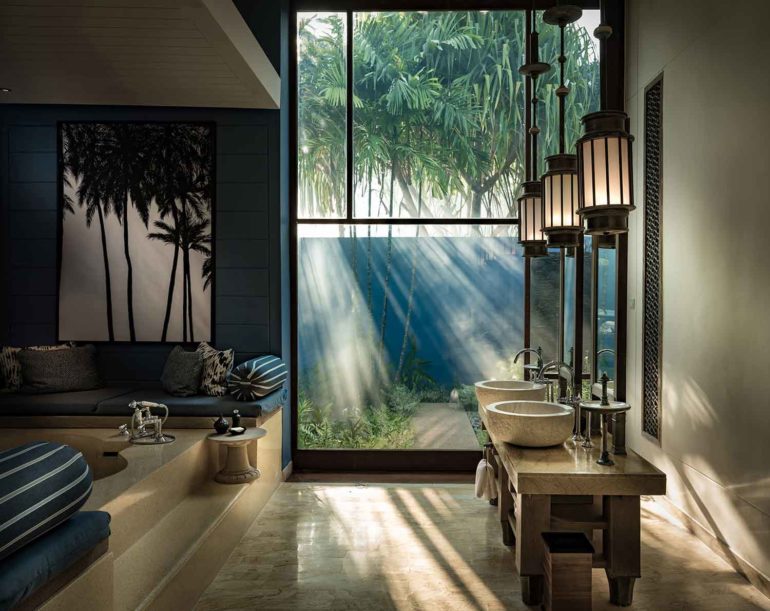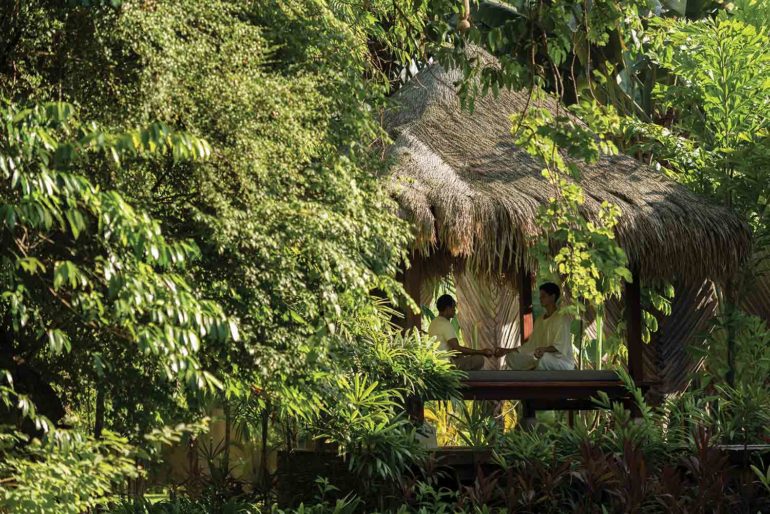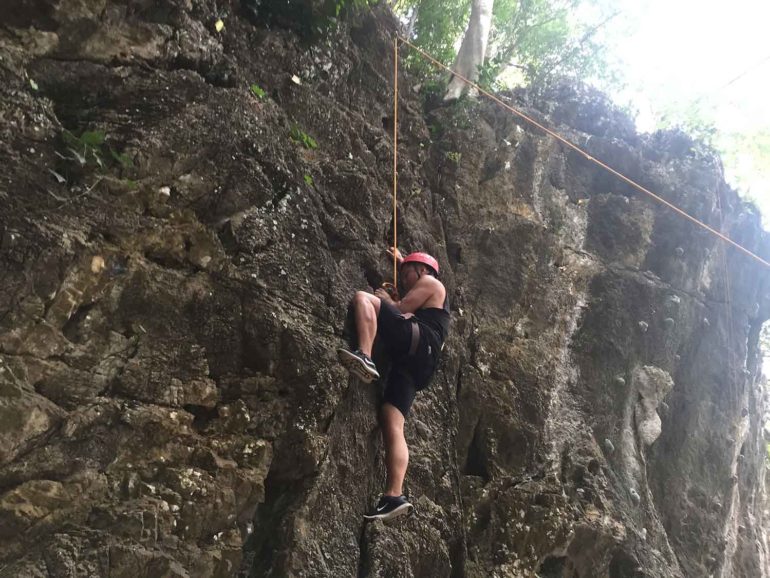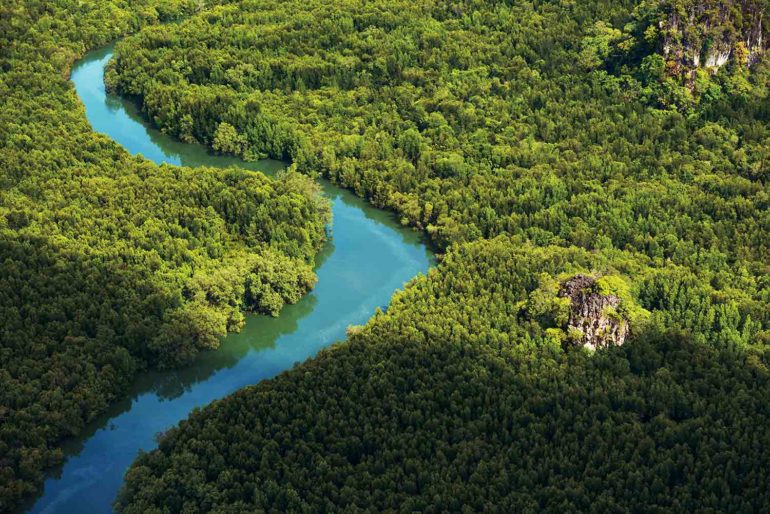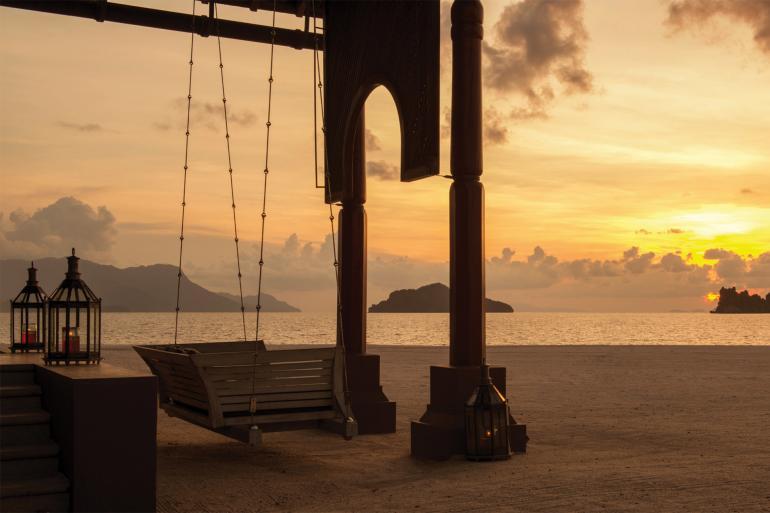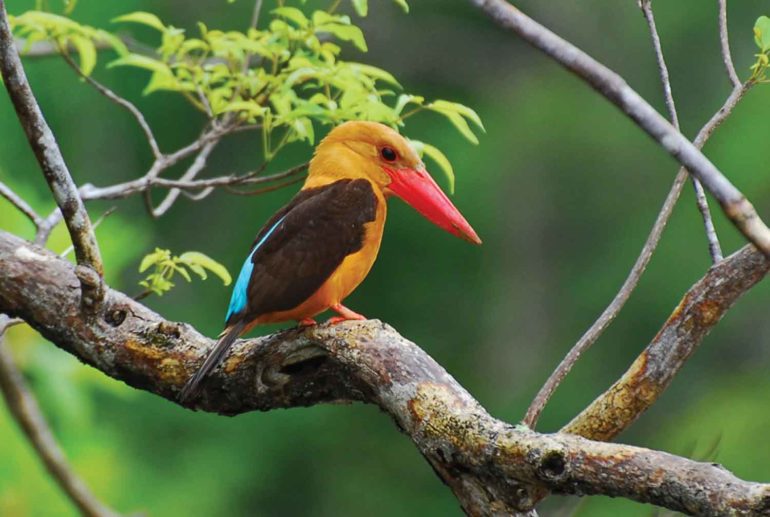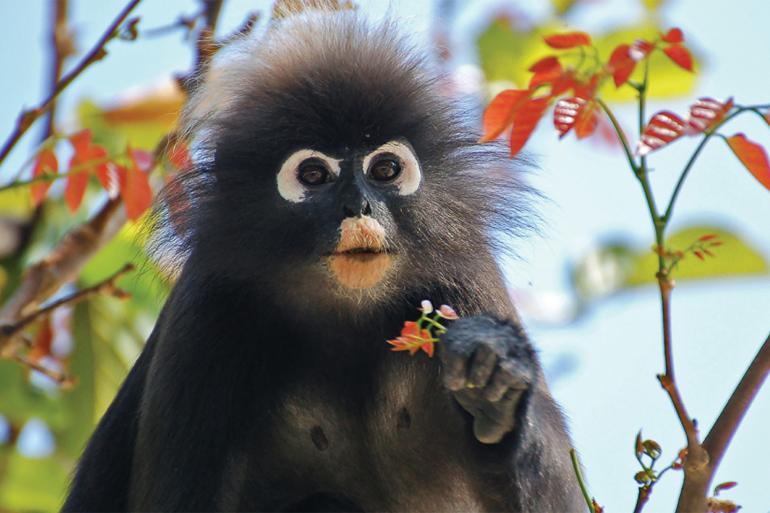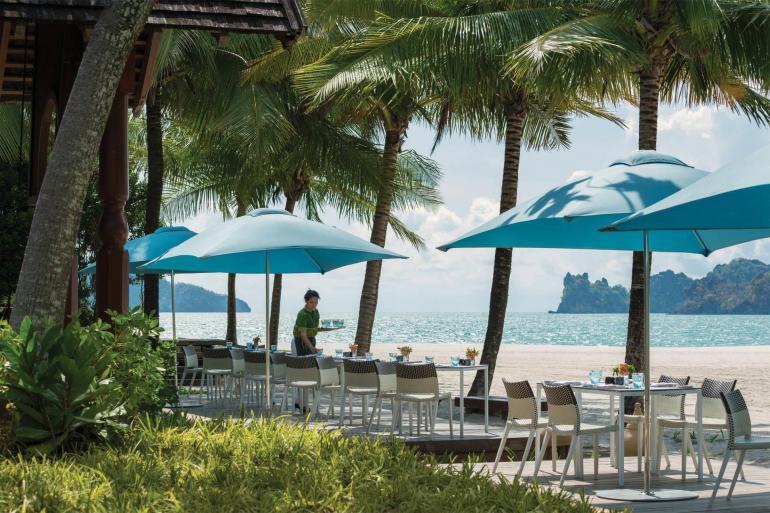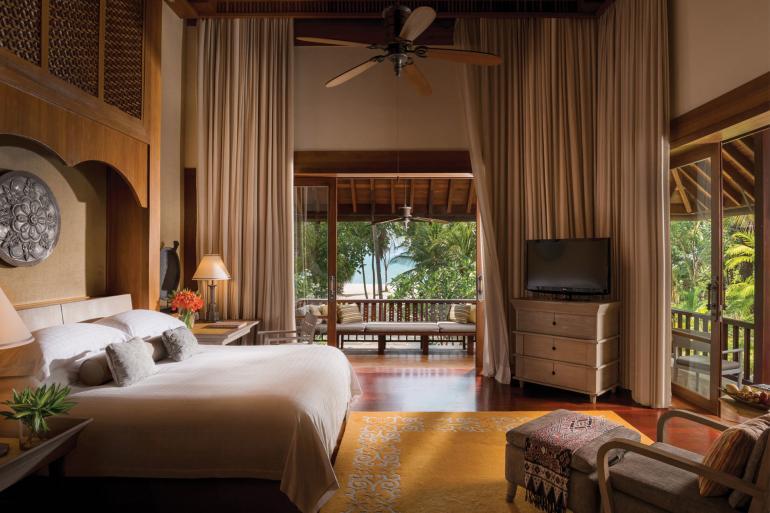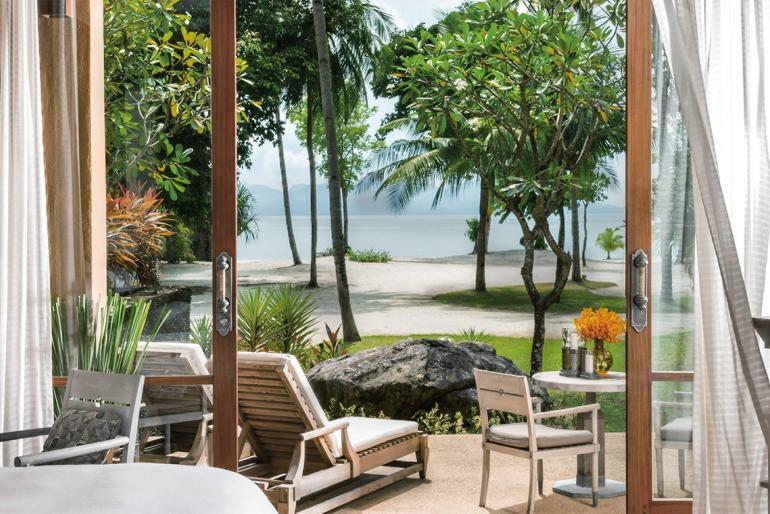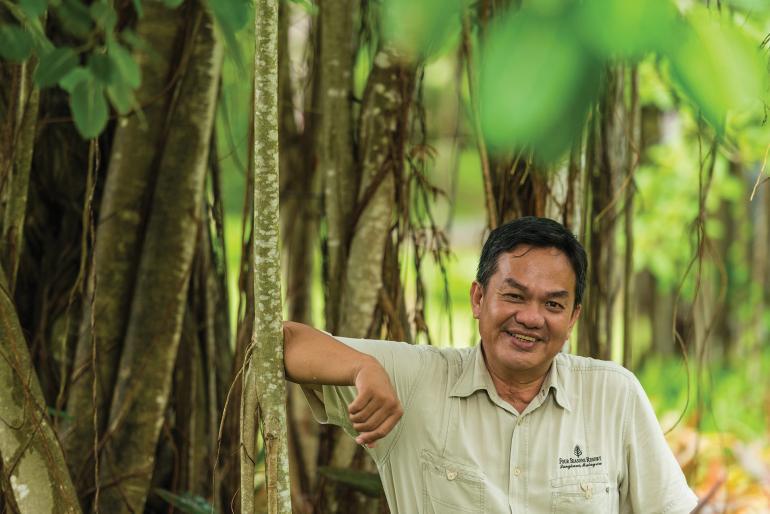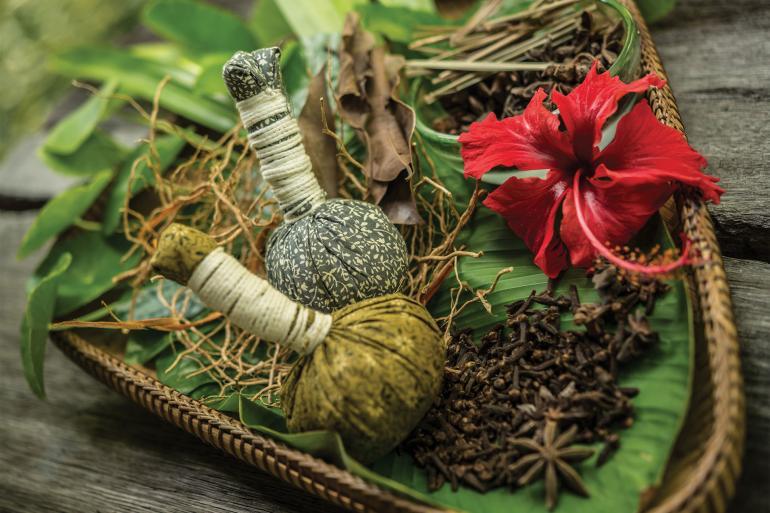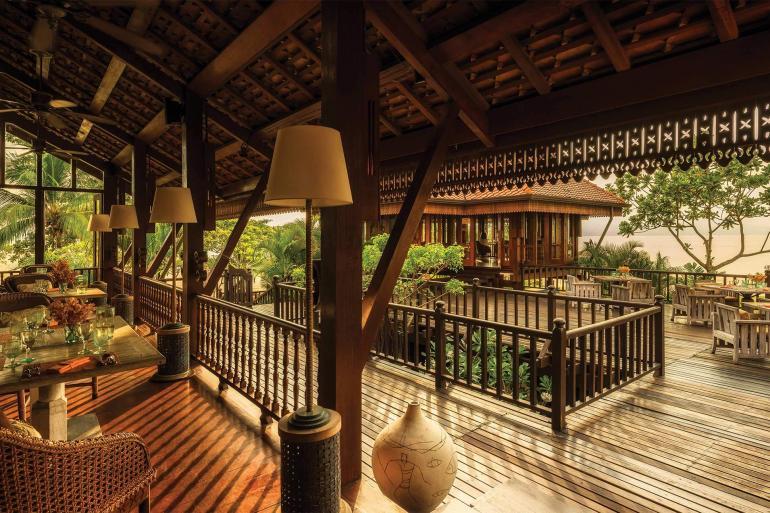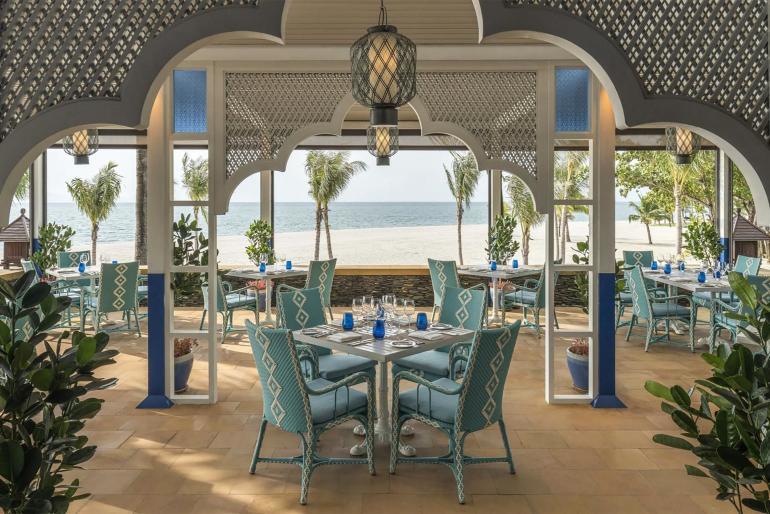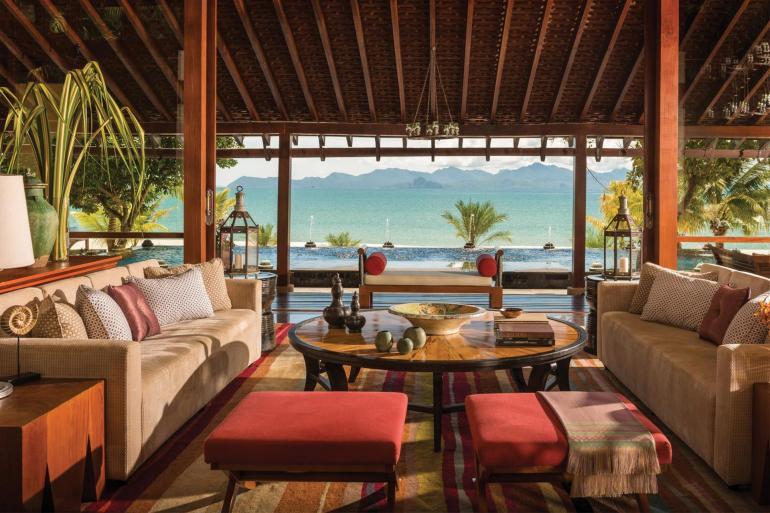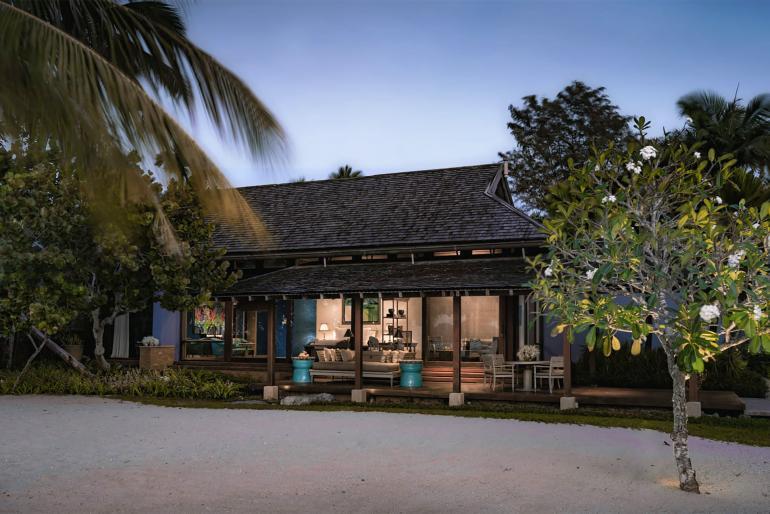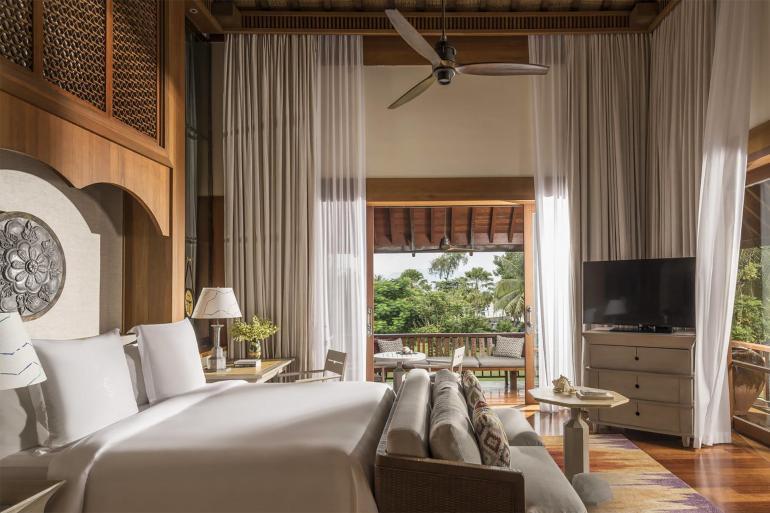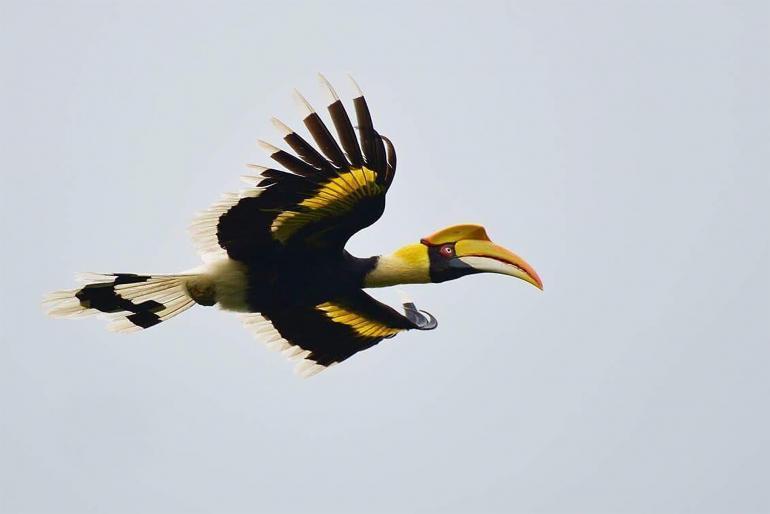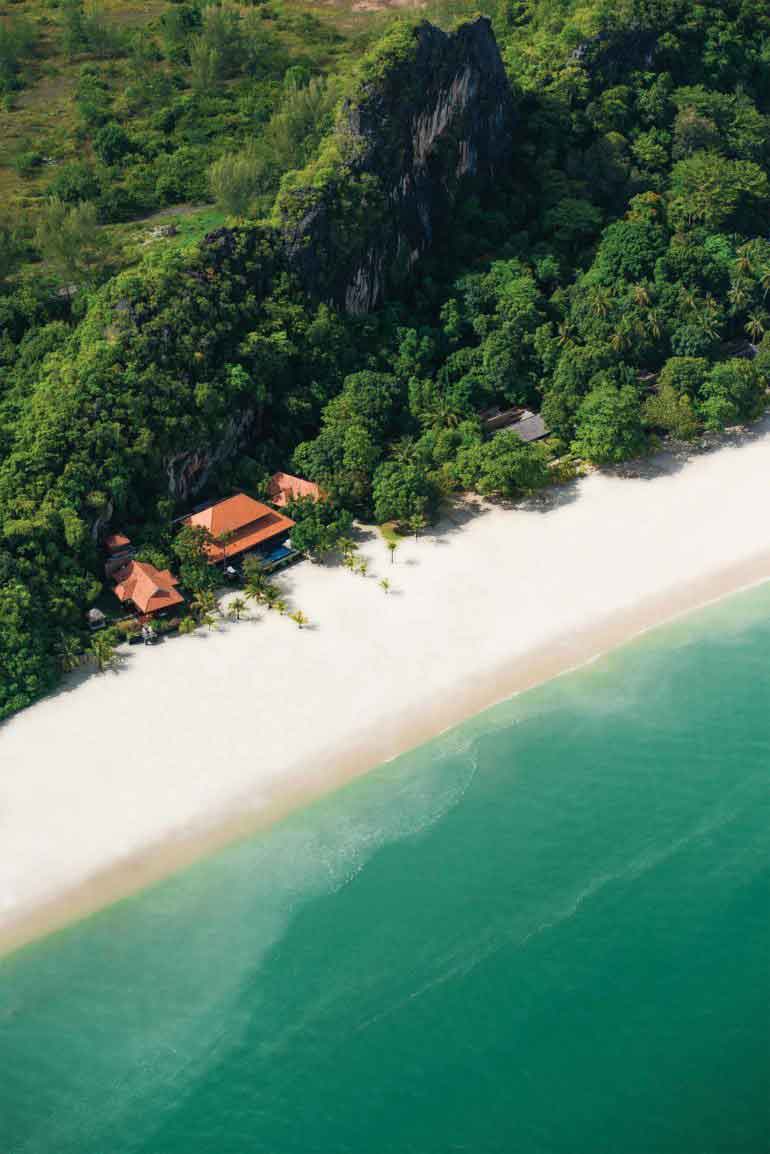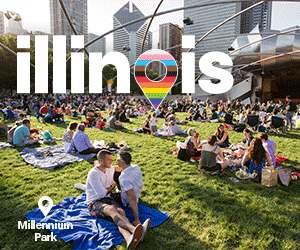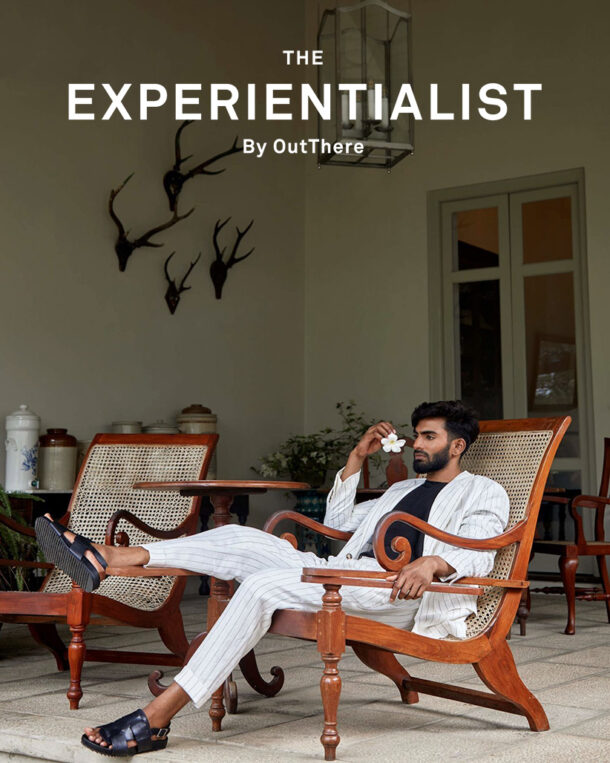Nature’s bounty
Having had a taste of the experiential, we are keen to find out more about the island. A guided bike tour to a local Langkawi village takes us back to the time to a rural Malaysia. We ride through the lush paddy-fields, breathing in the fresh air as we take in the view of the countryside and the majestic mountain, Gunung Raya (the epicentre of the island’s mystic power). It’s a far cry from our lives in London now, we see beautiful pink lotus flowers float among giant lily pads on a stream. We watch swarms of luminescent dragonflies dance a choreographed display in the air, so graceful, unlike the X-Jetblade experience. We see exotic jackfruit and tamarind trees, pick fresh, fragrant herbs and delight in other spectacular local fauna, including the mimosa plant, the one that shies away and closes up to the touch. And as if our time here has not had its fair share of folklore, we ride up to ‘Pantai Pasir Hitam’, where the sand is black, supposedly from the fires of an epic war between a mythical eagle and a valiant king. Here our guide tells us more local stories and other legendary Langkawi sites to visit if we were inclined – the ‘Gua Cerita’, or Cave of Stories, ‘Beras Terbakar’, the field of the burnt rice, ‘Pulau Dayang Bunting’, the island of the pregnant maiden, and ‘Telaga Tujuh’, the seven wells, or cascading waterfalls. The island’s magic extends to its natural wonders too – the absolute highlight of our entire stay is a morning out with the resort’s own resident naturalist, the enigmatic Aidi Abdullah. His office on the resort is a wizard’s den of all things to do with the surrounding ecosystem, the meeting point before going out with him on a half-day boat journey to the Geoforest Park. Just a short boat ride along the shore from the hotel, Casuarina trees (which give the beach the name ‘Rhu’), slowly turn into ancient mangroves and the fun begins. Flanked by limestone cliffs covered in thick equatorial vegetation, the mangroves are home to over 200 species of wildlife – monkeys (who Aidi is on first-name terms with), hornbills, kites, monitor lizards, snakes, tree-crabs and strange mid-evolutionary fish-reptile hybrids. Moreover, it is the habitat of the beautiful golden eagles that are Langkawi’s namesake.
But more than just learning about the nature of the area and absorbing his absolute passion for the conservation of wildlife, Aidi provided us with hours of entertaining company, regaling us with many amazing stories in his baritone voice and British lilt – stories of flying planes (he was once a pilot instructor at Langkawi airport), his interest in nature photography and meeting Elijah Wood. Aidi is actually a city-slicker, from the capital in Kuala Lumpur – but he came to Langkawi, fell in love (with the island and with his darling wife) – and never looked back.
‘Makan-makan’
The buffet breakfast at the hotel is a feast that’s not to be missed, both in its international gastronomy and also its setting overlooking the beach. There are two other dining options on the resort, but the best for us is ‘Ikan Ikan’. While its name literally means ‘fish’, (and rhymes poetically with the Malay word for ‘eat’ –makan) it’s not just seafood that’s on offer, but an authentic à la carte Malaysian restaurant set in a traditional iron-wood, Malay house, serving up mouth-watering (albeit pricey) traditional treats. Let it be known, that we end up dining here four nights of our six-night stay.
‘Ikan Ikan’ offers an excellent sampler of the best in local cuisine, but nothing beats a good, authentic, Malay night market, which happens daily in various places on the island. Getting off the resort to sample street food is easy, but requires a minimum taxi charge of RM100 (£20/$25), with a four-hour option available for just a little more. If you know the economics of Malaysia, you’ll know that you can have a taxi for a whole day for this amount, with dinner at the market being no more than a fifth of the fare. But that said, it’s absolutely worth your tourist dollars just to experience it.
But to really imbibe in the spirit of Tanjung Rhu and the island as a whole, you’ll need to watch one of its spectacular sunsets. The property’s bar is the perfect place to do this, perched on the beach with an uninterrupted view of the horizon. Comfy swing chairs and sofas will allow you to melt into the scene with one of the resort’s signature cocktails in hand, as the sun dips and the sky explodes in vibrant hues. It’s here that we realise that Mahsuri’s curse must be well and truly over, because we can’t imagine there being anything untoward about this most perfect of moments.
Photography by Aidi Abdullah and courtesy of Four Seasons Hotels and Resorts
At OutThere, we believe in boundless travel. But we understand that some destinations can pose challenges to travellers that complicate visiting them. We advise all visitors to inform themselves about local legislation and customs, and to work with a trusted travel provider in order to ensure a safe and pleasant holiday.


